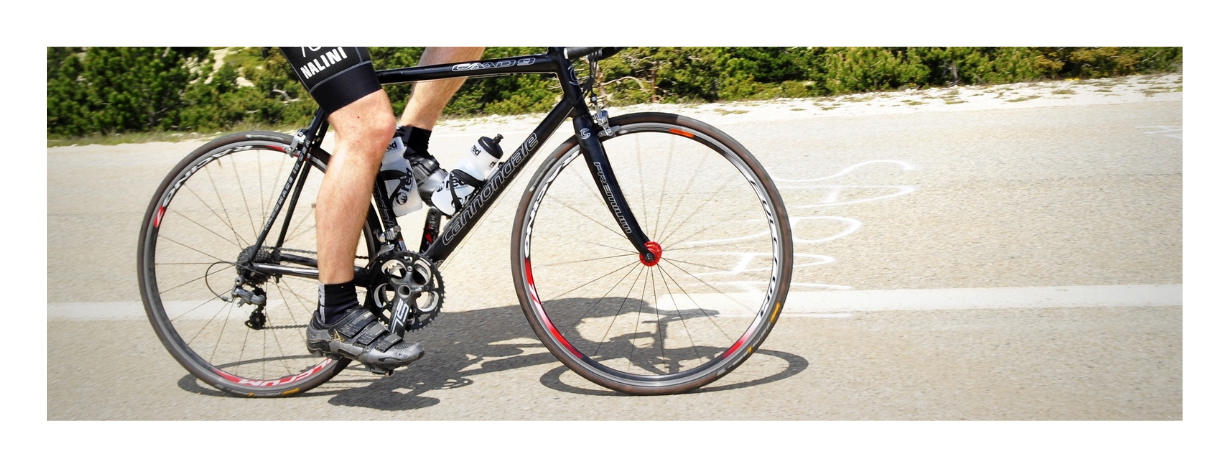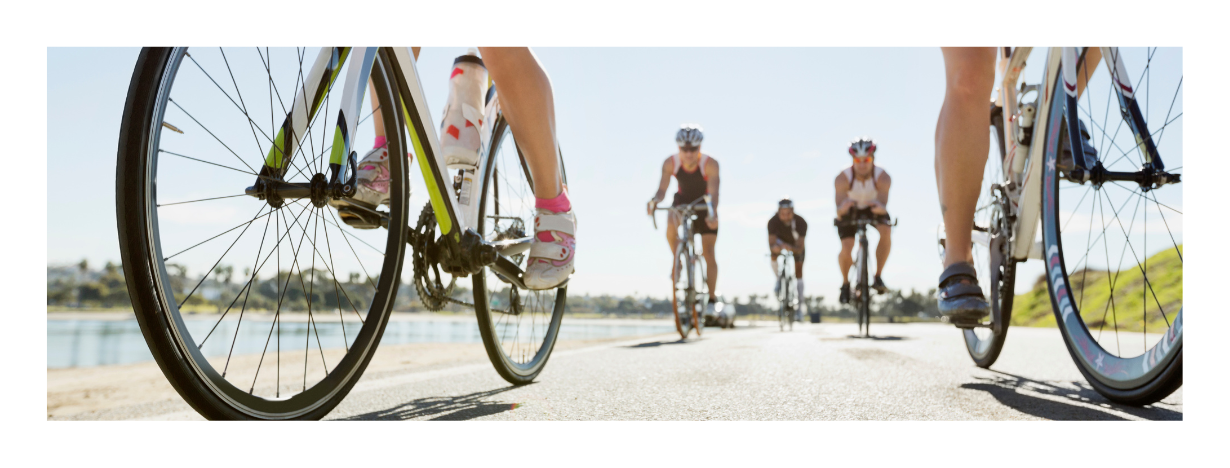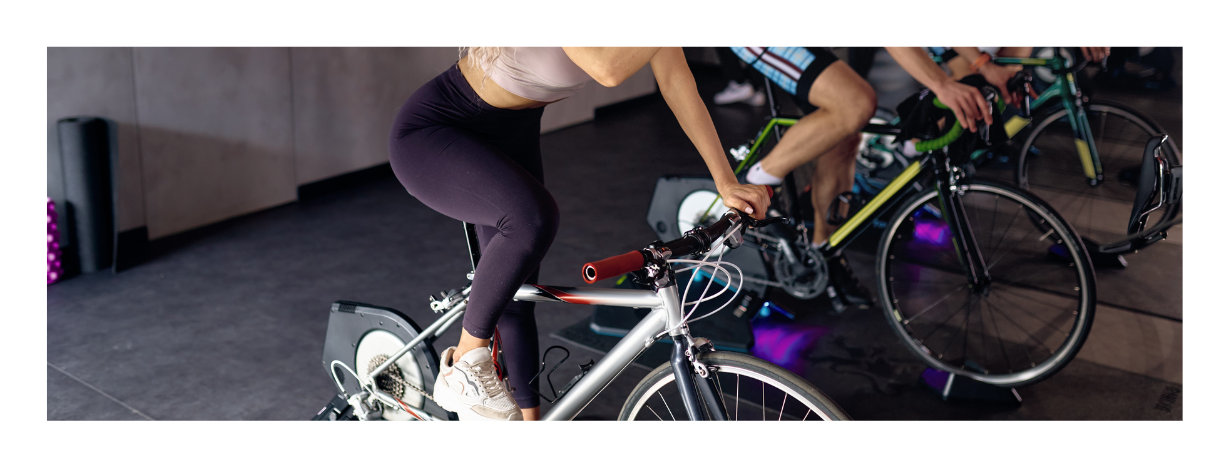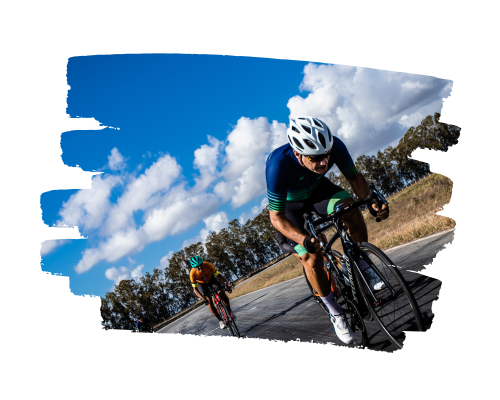Ever pedaled your heart out and wondered, “Am I even doing this right?” Let’s face it: we’ve all had those moments on the bike where we question our methods.
Maybe you’ve thought, “Why does that cyclist next to me seem so effortless when I’m pushing like mad?” I get you. Being a Triathlete for almost a decade, I’ve been there, in the exact same pedals you’re in now.
It’s that feeling of, “Am I in the right rhythm? Is my cadence making or breaking my ride?”
Ah, cadence. That intriguing beat of our pedal strokes can feel like a mysterious dance – a balance between our muscles’ power and our heart’s endurance. Ever felt the curiosity bubble up, poking at the back of your mind, making you wonder if there’s more to this cycling thing than meets the eye?
You bet there is. It’s that subtle difference between grinding uphill and floating up like a cloud. Between feeling your legs scream in protest and having them hum like a well-tuned engine.
So, what if I told you there’s a way to demystify this rhythm? To turn that question mark into an exclamation point of understanding and confidence. In this article, you’re about to uncover the world of cycling cadence – understanding its ins and outs, why it’s crucial, and how to master its ebb and flow.
Curious to turn that pedal uncertainty into a cycling symphony?
Let’s dive in, shall we?
Table of Contents
What is Cadence in Cycling?

Have you ever caught yourself tapping your foot to a catchy tune? Well, think of your cycling cadence as your bike’s rhythm. In essence, cadence is the number of times your pedals make a complete revolution in a minute. We measure this in revolutions per minute, or RPM for the cool kids.
Okay, let’s break it down a bit further.
- Cadence and Power: Your cycling power isn’t just about brute strength. It’s a delicate dance between two partners: the force you put on those pedals (we call that torque) and your cadence. Marry these two perfectly, and you’re in for an efficient ride.
- Typical Cadence Ranges: What’s “normal” or “ideal” can vary based on what kind of rider you are. Here’s a quick snapshot:
- Recreational Riders: 60-80 RPM
- Road Racers: 80-90 RPM
- Mountain Bikers: This varies, thanks to unpredictable terrains, but usually 70-90 RPM.
- Triathletes like yours truly: 85-95 RPM. We’re the endurance junkies, remember?
- Factors Impacting Cadence:
- Bike Fit: An ill-fitted bike can make maintaining a smooth cadence feel like a jigsaw puzzle.
- Gear Ratio: Think of this as your bike’s transmission. Different gears can either make your cadence faster or slower.
- Pedal Stroke Technique: A smooth stroke means a smooth cadence. Period.
- Terrain: Rolling hills or flat roads? It can make a world of difference.
- Speed and Fatigue: Your cadence can drop as fatigue sets in or when you’re pushing for that sprint finish.
Cadence might seem complex, but when you understand its components, it’s like finding your groove in a dance. And hey, if I, a Civil Engineer turned Triathlete, can master it, so can you!
So, are you ready to delve deeper and become the maestro of your cycling rhythm? Onward!
The Science Behind Optimal Cadence

Ever pondered why your spin class instructor is so obsessed with your RPM? Or why do some cyclists swear by grinding slowly while others flutter their legs like hummingbirds? The truth is, there’s science behind finding that “just right” pedal pace.
Optimal Cadence Explained
Imagine your cadence as the tempo of a song. Too slow, and you risk muscle strain; too fast, and you could be gasping for air. Optimal cadence is like that sweet spot in a song’s rhythm, where you’re efficient and grooving comfortably.
Effects of Different Cadences:
- Low Cadence (Below 60 RPM):
- More muscle force, less oxygen usage. Sounds good? Not really. This can lead to muscle fatigue, make you sore, and even cause injuries. Also, kiss smooth pedaling goodbye.
- High Cadence (Above 100 RPM):
- You’ll use less muscle force but will need more oxygen. This can be tough on the heart and lungs, potentially leading to breathlessness and overheating. Oh, and let’s remember the pelvic wiggle, which doesn’t do any favors for your efficiency.
- The Goldilocks Zone (80-90 RPM):
- It’s neither too high nor too low; it’s just right! Most cyclists find this range as their sweet spot. It balances muscle force and oxygen usage, making pedaling smoother, delaying fatigue, and boosting recovery.
The Science Weighs In
Is there concrete evidence backing this up? Let’s put on our nerdy glasses:
- Lucia et al. (2001): This study found that pro cyclists chose a brisker cadence, around 90 RPM, compared to amateur riders who hovered around 80 RPM during a 40-km trial. [1]
- Hansen et al. (2002): Interesting twist here. Elite cyclists showed better gross efficiency at a relaxed 60 RPM than a fast-paced 100 RPM during certain exercises. [2]
- Fonda et al. (2014): No one-size-fits-all here. Optimal cadence differed vastly among recreational cyclists, ranging from a chill 55 RPM to a lively 95 RPM, based on various factors like power, technique, and individual physiology.
In a nutshell? While there’s a consensus on the ideal cadence, individual preferences can vary. It’s like music tastes – while many jams to pop, some might groove to jazz. The key is to listen to your body and find your rhythm.
Why is Cycling Cadence Important?

Ever gone on a long drive and picked the wrong gear, only to hear your car groaning in protest? Similarly, that perfect rhythm or ‘cadence’ can be the make-or-break difference in cycling.
Let’s investigate the whys and why-nots of getting your pedal game on point.
Reaping the Benefits of Optimal Cadence
Why obsess over cadence?
Well, here’s what you gain:
- More Power & Speed: Think of cycling at the right cadence, like hitting the sweet spot in tennis. With less effort, you get that satisfying ‘whoosh’ and momentum.
- Ace Your Pedaling Technique: Just like a pianist perfecting finger movements, cycling with the right cadence helps you pedal more efficiently.
- Stay Injury-Free: Avoiding undue stress on your muscles lowers the risk of injuries and muscle strains.
- Enjoy the Ride: Ever noticed how a ride feels smoother when you’re in the right gear and rhythm? That’s optimal cadence boosting your comfort.
However, the flip side?
Drawbacks of Missing the Beat (Suboptimal Cadence)
- Wasted Energy: Pedaling too fast or too slow can drain your energy, slowing you down. It’s like trying to dance off-beat. Exhausting, right?
- Pedal Flops: A wrong cadence can throw your technique off, making your pedaling less effective.
- Hello, Injuries: Stepping out of your cadence comfort zone? You’re courting muscle damage and potential injuries.
- Joykill Ride: Pedaling at the wrong pace can turn your breezy cycle trip into a grind.
So, as you see, cycling cadence isn’t just about numbers or keeping pace. It’s the secret sauce to your cycling experience, a perfect blend of power, technique, safety, and pure, unadulterated joy.
Ready to find your beat and master your ride? Let’s roll!
What is the Ideal Cadence for Cyclists?

Alright, pedal pals, let’s talk about the Great Cadence Debate. Some folks swear by fast and furious spinning, while others are all about that slow and steady grind. Who’s right? It turns out it’s not a black-and-white answer.
No Universal Cadence Dance
Is there a one-size-fits-all cadence for everyone? Think again! What’s your jam might not be the groove for another cyclist. Why? Your ideal cadence depends on a cocktail of factors:
- Cycling Goals: Want to sprint like the wind or last longer than a Netflix binge session? Whether you aim for endurance, speed, power, or agility defines your cadence.
- Cycling Turf: Asphalt aficionado or mountain trail maverick? Where you ride can alter your RPM preferences.
- Style on the Saddle: Do you vibe with a rapid rhythm or a more grounded groove? It’s like choosing between rock or jazz.
- Physique Factors: From height and weight to leggy leverage, your body’s unique blueprint plays a cadence cameo.
Cadence Cheat Sheet
Alright, time for some quick guidelines based on these factors:
- Endurance Enthusiasts: Go for a moderate to high 80 to 100 RPM cadence. Less muscle fatigue, more oxygen love.
- Speedsters: Pump up the jam with a 90 to 110 RPM cadence. Power output + acceleration = 🚀
- Power Players: Opt for a low to moderate cadence (60 to 80 RPM). Flex those muscles!
- Agility Artists: Variable cadence (50 to 120 RPM) is your mantra. Adapt and conquer!
- Road Riders: Smooth roads? A higher cadence of 80 to 100 RPM works wonders.
- Mountain & Gravel Grinders: Go a tad lower, around 60 to 80 RPM. Embrace the terrain!
- Track Titans: With fixed gears and shorter distances, shoot for a super high cadence of 100 to 120 RPM.
- Spin vs Grind: If you’re a spinning sensation, aim for 90 to 110 RPM. Grinders? A comfy 70 to 90 RPM.
- Body Blueprints: Tall with long legs? A lower cadence of 60 to 80 RPM might be your beat. On the shorter side? Pump it up to 80 to 100 RPM.
In the end, it’s like finding the right playlist for your road trip – you’ve got to feel the beat that matches your vibe. So, play around, experiment, and discover your pedal tempo.
How Do You Calculate Your Cycling Cadence?
Ever found yourself pedaling away, wondering, “Am I doing this right?” or “Is this the best pace for me?” Well, you’re not alone! But don’t fret – I’ve got the inside track on calculating your cycling cadence like a pro.
Count, Connect, or Coach? Choose Your Cadence Tool
- Old School Counting
- The How: Just clock how often one knee rises in 30 seconds, then double it! Voila! RPM sorted.
- Pros: Wallet-friendly and no gadgets needed.
- Cons: It can be a tad inaccurate (unless you’re a human stopwatch). External factors like that pesky headwind or a sudden hill can throw your count off.
- Cadence Sensor Superstar
- The How: Strap a nifty sensor to your crank or pedal. It’ll beam all the juicy details to your bike computer or smartphone app.
- Pros: Pinpoint precision on your RPM, plus bonus metrics like speed and distance. It feels like you have a mini-cycling coach!
- Cons: It might hurt your pocket. Plus, the occasional tech headache (we’ve all been there). Don’t forget those batteries!
- Smart Trainer or Indoor Bike Brilliance
- The How: Pedal away on these high-tech wonders. They’ve got built-in sensors and displays to keep you in the know.
- Pros: Real-time RPM and extra metrics, like power and heart rate. No outdoor distractions!
- Cons: It can sometimes feel like you’re stuck in cycling purgatory. It’s great but needs more thrill than the open road.
While counting your knee rises can give you a ballpark figure (and a fun game to play while you ride), tech solutions like cadence sensors or indoor trainers offer precision and added insights. But remember, what’s most important is finding what feels suitable for you.
Whether you’re a gadget guru or an old-school cyclist, it’s all about enjoying the ride. So, how will you measure up on your next journey?
Adjusting Cadence According to Terrain and Fatigue

Feeling like a cycling superhero? But then suddenly hit an unexpected hill and thought, “Uh-oh… now what?” We’ve all been there. While having an optimal cadence is the golden ticket, adjusting it as the ride unfolds is the secret sauce to a smooth journey.
Let’s dive into the hows and whys of fine-tuning your pedal pace.
Playing with Peaks and Valleys: Terrain Tactics
Navigating different terrains like a pro isn’t rocket science – but it does require a bit of gear shifting (both literal and metaphorical!).
- Huffing Uphill:
- Reduce your cadence slightly (aim for 60-70 RPM).
- Shift to a harder gear – but don’t go overboard to avoid muscle strain.
- Here’s a fun tip: Stand occasionally, giving your saddle-sore bum a break and engaging other muscles.
- Dashing Downhill:
- Boost that cadence to 90-100 RPM.
- Lighten up on the gears. But don’t coast too freely, lest you sacrifice efficiency.
- Weight shift alert! Move back a bit for better gravity balance and handling.
- Flatland Fancy:
- Stick within the golden 80-90 RPM range.
- Adjust gears based on those unpredictable factors – hello, sudden wind gusts!
- Feeling a bit numb in the hands? Mix up those hand positions for some relief.
Listen to Your Body: Fatigue Factors
Just as marathon runner paces themselves, a smart cyclist adjusts cadence based on fatigue. Listen to your body; it’s wiser than you think!
- Kickstarting Your Ride:
- Begin with a brisker cadence of 90-100 RPM.
- Ease into lighter gears, helping conserve that precious energy.
- Stay hydrated and munch on some energy-boosting snacks. (Who said cycling isn’t a great excuse to eat?)
- Ride’s End Rundown:
- Drop the cadence to 70-80 RPM.
- Go for slightly harder gears to squeeze out all remaining power.
- After crossing that finish line, do your future self a favor and stretch out those tired muscles.
While finding your sweet spot in cadence is a win, mastering the art of adjusting is where the real magic happens. So, the next time you’re faced with that daunting hill or nearing the end of a grueling ride, remember: It’s not about sticking to one pace but dancing through the variances. Now, ready to pedal on with newfound wisdom?
How Do You Improve Your Cycling Cadence?

Let’s get into the nitty-gritty of cycling cadence because It’s not just about finding your sweet RPM spot. Oh no, there’s a whole world of pedaling prowess awaiting you.
Methods & Drills: Pedal like a Pro
Alright, let’s roll up our sleeves (or, err, leg warmers?) and dive into some drills to take that cadence from “meh” to “marvelous”!
- Regular Practice: The name of the game? Practice, practice, practice! Whether uphill or downhill, track your cadence using nifty gadgets like a cadence sensor or bike computer. Throw in a heart rate monitor or power meter; you’re golden.
- Interval Drills:
- For a few minutes, go on high cadence bursts (aim for 100-120 RPM).
- Switch to a chill pace at 60-70 RPM for an equal time.
- Play with duration and intensity to keep things fresh.
- Single-Leg Pedaling:
- Give each leg its spotlight for a few minutes. It feels odd but oh-so-effective for balance and smoothness.
- Bonus points for focusing on various pedal phases: pushing, pulling, scraping, and kicking.
- Cadence Mimicry:
- Spotted a fellow cyclist with enviable technique? Try to match their cadence for a bit. It’s a fun, sneaky way to learn and challenge yourself.
- Or, if watching the Tour de France from your couch (no judgment!), pedal along with the pros and see if you can keep up.
So there you have it, pedal partner! Boosting your cadence isn’t just about numbers; it’s about embracing the rhythm of the ride, honing your technique, and enjoying every spin-filled second.
Common Wisdom & Myths About Cadence
Have you ever been swamped with advice about your pedaling rhythm? Like, there’s a magical cadence number you should be hitting to be the next Tour de France winner?
Let’s dive into the world of cadence myths, clear up the confusion, and find out what’s spin-worthy and what’s simply… well, spin.
“The Higher-the-Better” Wisdom”
- Wisdom says: Pros pedal faster, so you should too.
- But hold up! Indeed, those shining stars of the cycling world generally have higher cadences. But here’s the twist: they’ve got their specific training, flashy equipment, and race conditions. Your average Jane and Joe might have different optimal cadences based on power output, technique, and physiology factors. Remember, pros are… professional. They do this day in, day out.
The Magic Number Myth
- Myth whispers: There’s an ideal cadence for everyone.
- Break out the reality wand because this needs some debunking! The notion of a universal cadence is as real as unicorns. Cyclists vary. You might be an uphill champion or a speedy flatland wizard. Your ideal cadence depends on goals, disciplines, and personal quirks. And guess what? That “optimal” number might change as you age or get fitter. Flexibility, my friend, is the name of the game.
The Constant Cadence Conundrum
- Myth claims: Keep that cadence steady, no matter what.
- Whoa! If you pedal at the same cadence uphill, downhill, on the flats, during a solar eclipse… you get the drift; it’s gonna get monotonous. Plus, that’s not optimizing your performance. Adapting your cadence based on terrain and fatigue can elevate your bike ride from “meh” to “magnificent”! And trust us, pedaling with the same rhythm all the time is like eating the same meal every day. It’s boring and not always best for you.
Cycling cadence is personal, folks. What works for one rider might not work for another. Instead of chasing myths, tune into your rhythm, experiment, and find what makes your cycling heart (and feet) happy. And remember, whether you’re pedaling fast or slow, the journey is the real magic.
Wrapping It Up on the Right Cadence
Whew, we’ve pedaled through a whole lot, haven’t we?
If you’re sitting there thinking, “Man, cycling cadence is more intricate than I imagined, and I’m not even sure where to start,” don’t worry. I hear you. It’s like being handed the menu at a gourmet restaurant when you’re used to the drive-thru. Overwhelming, but oh, the potential!
The heart of the matter?
- Cycling cadence isn’t just a number. It’s the rhythm to your bike’s song and your cycling heart’s beat.
- Purpose matters. Whether you’re chasing optimal performance or pure, unadulterated joy, it’s worth understanding and tweaking.
Don’t get bogged down by all the details. Start small:
- It could be trying out one new drill this week.
- Or experimenting with your rhythm on different terrains.
Trust in this journey. There are tools at your disposal:
- Nifty gadgets like cadence sensors and trainers.
- A plethora of apps and books to guide you.
But remember, you’re the maestro of your symphony, and you get to decide the tempo.
Feel the rhythm, listen to your body, and embrace the journey. As you ride and refine, you’ll find your unique groove. Maybe your optimal cadence is 85 RPM, maybe it’s 95, or perhaps it’s a flowy mix, depending on the day. The key?
- Listen.
- Learn.
- Experiment.
- Enjoy.
A Challenge: On your next ride, pick one cadence tip and give it a spin. Feel it out. Is it your tempo? Or something you’d pass? No matter the result, you’re one pedal closer to your ultimate cycling groove.
And remember, in the grand tapestry of cycling, it’s not just about reaching the destination but the cadence at which you pedal through the journey. So, what’s your rhythm going to be?

